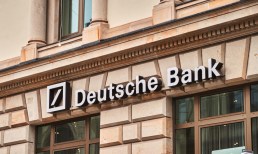The G19 report from the Fed indicated that the aggregate tally of consumer credit surged by $17.9 billion, which far outpaced consensus estimates of a $11.4 billion gain.
The annualized gain came in at 4.3%, the highest rate since the beginning of the year, reaching $5.01 trillion in outstanding balances. That’s also highest amount of credit outstanding since the end of last year, though it also represents a slight decrease of 0.8% from the April 2024 levels.
Loading Up on the Cards
April’s increases were driven primarily by a 7.0% rise in revolving credit, the highest increase since the start of the year, while non-revolving credit grew at an annualized rate of 3.3% last month.
Both outstanding credit balances rebounded from their declines in March, rising by 0.6% in April, the largest monthly increase in the past six months, reaching a balance of $1.3 trillion. Revolving debt includes but is not limited to credit card balances.
Non-revolving credit — which includes auto loans, mortgages and student loans increased by 0.3% last month, reaching an outstanding balance of $3.7 trillion, the highest growth since July 2024.
Among major holders, depository institutions accounted for $1.9 trillion, maintaining their position as the largest holders of consumer credit, followed by the federal government at $1.5 trillion. Credit unions owns $648 billion of the outstanding credit, where $84.6 billion accounts for revolving credit.
Mixed Spending Trends
There are some indications, in separate Fed data, that the spending may have slowed a bit.
As PYMNTS reported this week, the central bank’s Beige Book — spanning 12 reporting districts across the nation — detailed that consumer-level spending was mixed, with most districts reporting slight declines or no change. The outlook was less uniform regarding consumer spending, where five districts signaled at least slightly worsening in conditions, while four pointed at improvements in this area.
Some districts reported increases in spending on items expected to be affected by tariffs. Selling price increases remained moderate, but some contacts reported input prices grew strongly with tariff-induced cost increases, and some firms are passing along those price increases to end customers.
PYMNTS Intelligence reported that 35% of consumers surveyed had used credit cards for their most recent impulse purchases, and about a third of individuals used cards to cover emergency purchases.
Unplanned retail spending — whether impulse wants or emergency needs — is a regular occurrence for the average shopper, the research showed. As many as 36% of consumers splurged at least $250 on an impulse buy in the last three months, and 35% made an emergency purchase of the same amount through the past year.




